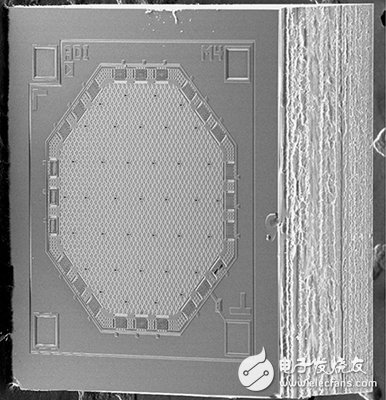Due to the aging population and a significant increase in the number of people with hearing loss, the hearing aid market continues to grow, but its conspicuous appearance and short battery life have caused many people to lose interest. As hearing loss becomes more common, people will look for smaller, more effective, and higher quality hearing aids. At the front end of the hearing aid signal chain is a microphone, which detects speech and other environmental noise. Therefore, improving audio capture can improve the overall performance of the signal chain and reduce power consumption.
A microphone is a sensor that converts acoustic signals into electrical signals for processing by the audio signal chain of the hearing aid. There are many techniques available for this type of acoustic-electric conversion, but condenser microphones are among the smallest and highest-precision microphones. The film in a condenser microphone moves with an acoustic signal. This movement causes a change in capacitance, which in turn produces an electrical signal.
Electret condenser microphone (ECM) is the most widely used technology in hearing aids. ECM uses a variable capacitor, and one of its plates is made of a material with permanent charge. ECM is famous in today's hearing aid industry, but the technology behind these devices has not changed much since the 1960s. Its performance, repeatability and stability against temperature and other environmental conditions are not very good. Hearing aids and other applications that focus on high performance and consistency create opportunities for the development of new microphone technologies. New technologies should improve the aforementioned shortcomings and allow manufacturers to produce higher quality and more reliable equipment.
Microelectromechanical system (MEMS) technology is the backbone of the transformation of condenser microphones. MEMS microphones take advantage of the tremendous advancements in silicon technology over the past few decades, including ultra-small manufacturing structures, excellent stability and repeatability, and low power consumption, all of which have become the uncompromising requirements of the silicon industry. So far, the power consumption and noise level of MEMS microphones are still quite high, and they are not suitable for hearing aids. However, new devices that meet these two key requirements have already appeared and are setting off the next wave of innovations in hearing aid microphones.
How MEMS microphone works
Like ECM, MEMS microphones are also condenser microphones. The MEMS microphone contains a flexible floating film, which can move freely on a fixed backplane, and all components are manufactured on a silicon wafer. This structure forms a variable capacitor with a fixed charge applied between the film and the backplane. The incoming sound pressure waves pass through the holes in the back plate, causing the film to move, the amount of which is proportional to the amplitude of the compression and sparse waves. This movement changes the distance between the film and the backplane, which in turn changes the capacitance, as shown in Figure 1. In the case of constant charge, this capacitance change is converted into an electrical signal.

Figure 1. The capacitance of a MEMS microphone changes with the amplitude of the sound wave
The process of manufacturing microphone sensor elements on silicon wafers is similar to other integrated circuit (IC) manufacturing processes. Unlike ECM manufacturing technology, the silicon manufacturing process is very precise and highly repeatable. All MEMS microphone components manufactured on a wafer have the same performance. Not only that, but in the multi-year life cycle of the product, each component on different wafers also has the same performance.
Silicon manufacturing uses a series of deposition and etching processes in a strictly controlled environment to produce a collection of shapes of metal and polysilicon to form a MEMS microphone. The geometric structure involved in the production of MEMS microphones is on the order of micrometers (μm). The diameter of the hole in the backplane through which the sound wave passes can be less than 10 μm, and the film thickness can be about 1 μm. The gap between the film and the backplane is only a few microns. Figure 2 shows an SEM image of a typical MEMS microphone sensor element, viewed from the top (thin film). Figure 3 shows a cross-sectional view of the middle of the microphone element. In this design, sound waves enter the microphone through the cavity at the bottom of the element and pass through the back plate holes to excite the membrane.

Figure 2. SEM image of MEMS microphone

Figure 3. Cross section of MEMS microphone
Because the geometric structure is strictly controlled in the manufacturing process, the measured performance of different microphones is highly repeatable. Another advantage of using MEMS technology to build a microphone is that the film is extremely small, so its mass is very small. Compared with the ECM, which has a much larger film quality, MEMS microphones are less susceptible to vibration.
Electrical Guide Aluminium Din Rail,Industrial Din Rai Power Supply,Mounting Din Rail For Terminal Block,Standard 35Mm Aluminum Din Rail
Wonke Electric CO.,Ltd. , https://www.wkdq-electric.com